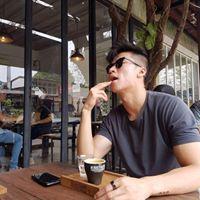
Trevor
Members-
Posts
206 -
Joined
-
Last visited
About Trevor
- Birthday 06/24/1955
Profile Information
-
Gender
Male
-
Location
Auckland, New Zealand
LW Info
-
Leatherwork Specialty
Pouches,belts,repairs & sewing
-
Interested in learning about
Braiding and knots
Recent Profile Visitors
Trevor's Achievements

Member (2/4)
-
Thank you Bob. Yes I always knew that Consew had a model very similar but wasn't sure of the model number. I am very grateful to you for your help. Thanks Bob Regards Trevor "Way Down Under"
-
HELP!! Does anyone have or know where to find a SEIKO TH-8B manual. I have that machine (and Im wanting to sell it) but it needs a timing set up and everything checked to make sure its running as it should. Im prepared to pay (not too much) and haven't had much luck with Google or the Japanese manufacturers at all. I wrote an email to the Seiko people in Japan but got told to "see the dealer that I bought it from" (I got it 2nd hand). If you have such a thing I would love to hear from you. Cheers Trevor "Way Down Under"
-
I have two pairs of leather scissors and they are both "Wilkinson Sword" made in Sheffield England. Fantastic to cut heavy veg with and everything else. They should be regularly tickled up with a diamond file just to keep a very keen edge. Never cut anything else except thread and leather. Don't loan them out either. Cheers Trevor "Way Down Under"
-
You can always use another wrap around piece of leather, separate from the belt. to go around the buckle and sew it to the double piece. make sense?? I make heavy leather belts all the time. This is one way around your problem. Can look very nice as well if you shape the bit the attaches on the top. Here is a picture for you to contemplate. Cheers Trevor "Way Down Under"
-
Contact Cement My Nemesis - Dear Lord Someone Help Me!
Trevor replied to Windrider30's topic in How Do I Do That?
This is called Mineral turpentine not methylated spirits. Cheers Trevor "Way Down Under" -
Contact Cement My Nemesis - Dear Lord Someone Help Me!
Trevor replied to Windrider30's topic in How Do I Do That?
Hi there. The leather that I use is mostly factory dyed. The turps has no effect on the dye but breaks down and gets rid of the glue. if you use it on raw russet (Natural colour veg) just remember to rub the turps all over the leather not just on the glue. If there is any colour change it will be constant and go un- noticed. Always try a little on your dyed area first just to be sure. Cheers "Way Down Under" -
Nice work dude. I would like to see how good the fit is on user. some people wont have a tall neck like the collar but Im interested to see the end user and see how it fits. nice work cheers Trevor "Way Down Under"
-
Contact Cement My Nemesis - Dear Lord Someone Help Me!
Trevor replied to Windrider30's topic in How Do I Do That?
Hi there. I get contact glue everywhere sometimes and I use mineral turpentine to remove. It will break down the glue but don't rub and rub too hard. Good luck Trevor "Way Down Under" -
Pouch For A Friend
Trevor replied to Trevor's topic in Purses, Wallets, Belts and Miscellaneous Pocket Items
That's a very good question. The leather is quite thick (3.5mm) and will (if put under enough pressure) do what you want. The edges will ripple if you don't press hard enough and keep the pressure on for at least a day. This will help to flatten the leather as well. You can see on the first pictures that the ripples are there but not enough to worry about. Remember that this press will press 10 metric tonnes (about 11 US Tons) so its pretty good at squashing the leather. I wouldn't like to try the same thing buy hand. I think the moulds play a big part in keeping the whole lot together when squashed. keep them reasonably tight. Hope that answers your question. Did a double knife pouch the other day for a guy. Heres the result... Cheers Trevor "Way down Under" -
I have a machine that I had made (Along with the embossing rolls) by a guy here in New Zealand. He made the rolls (two) out of a brass material which has lasted the distance. They were not cheap but are not the cast wheels and leave a very distinct, sharp and irreversible pattern. Here is a photo of the machine which is a cheap rolling mill from India. I have an inch and a half and a two and a quarter inch roller for trouser and police/security belts. I line the belts which makes them very heavy and very nice. Good luck in your quest Cheers Trevor "Way Down Under"
-
What Type Of Setting Tool Do I Need For These Collar Studs?
Trevor replied to greighson's topic in How Do I Do That?
I think you will find that the hammer in studs are actually very strong indeed. I use them and the screw in ones for different purposes and I'm sure there are others that will agree. I have found that the tool used for the "Hose rivets" or those with the burr there is a tool made to round off the end. If you just put the round concave end on the top of the studs and hammer in this will do the trick nicely. Just make sure that the concave end is bigger than the stud end. I did one the other day and I hit it a little hard and the brass plating came off the stud. If anyone needs a picture I will post for you. Cheers Trevor "Way Down Under" -
Pouch For A Friend
Trevor replied to Trevor's topic in Purses, Wallets, Belts and Miscellaneous Pocket Items
Hi there peter. This one was made out of some scrap particle board (not sure what you guys call it) but its cheap and easy to work. I cut a cardboard pattern first using the fold in half method to get it the same on both sides then cut the rough shape with a jig saw and then cut another the same then glued and screwed them together. I am fortunate to have a shoe makers sanding station which is a godsend. I can sand, grind and polish to my hearts content. This helps with the nice curved edges as well. the two sheets together make a good strong tall mould. Also the outer plate or mould follower is also a 1" thick piece of the same material. its just that you need to carefully round the edges where the leather will rub under pressure. Also leave enough of a gap say 5 or 6mm all around so the leather can fold and curve up when the pressure is applied. You can use anything that is strong like plastic board, wood and what I do like is ply wood. This is very strong indeed and will be cheap as well. I have many moulds for all shapes etc like pocket knives pouches and various shapes, but wood, particle board and plastic are all good. cheers Trevor "Way Down Under" -
Pouch For A Friend
Trevor replied to Trevor's topic in Purses, Wallets, Belts and Miscellaneous Pocket Items
Hi there Michelle. I have an Artisan toro 3000 machine with a 794 LR 250 needle using T350 A&E thread bought from Tippman (T300 on the bobbin). I backstitch to start with and go up to the edge and over the edge one stitch then come back down and go around. I try and stay as close as poss without scuffing the edge. This is quite a worry when there is a big finger screw to tighten the foot up. So I modified the foot screw and couldn't find a replacement so I re-tapped the thread and put in a m4 round head machine screw instead. This helped but it still gets in the way a little. here is a photo of the foot setup that I use. So once I get to the other end on a (carefully marked line of course which I make with a flat screwdriver around the edge first) I backstitch again back to the same distance down that I started with on the other side. Hope all this makes sense to you. Cheers Trevor "Way Down Under" -
Pouch For A Friend
Trevor replied to Trevor's topic in Purses, Wallets, Belts and Miscellaneous Pocket Items
Thanks heaps for the comments. Cheers -
Pouch For A Friend
Trevor replied to Trevor's topic in Purses, Wallets, Belts and Miscellaneous Pocket Items















